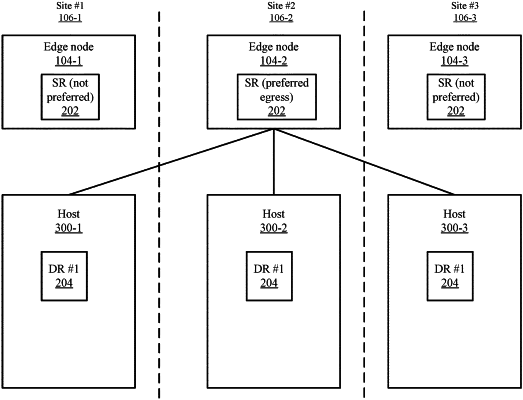| CPC H04L 45/54 (2013.01) [H04L 45/16 (2013.01); H04L 45/44 (2013.01); H04L 45/46 (2013.01); H04L 45/586 (2013.01); H04L 45/74 (2013.01)] | 21 Claims |

|
1. A method for selecting an egress point for accessing an external network associated with a distributed logical router that is distributed across at least a first computing device and a second computing device, the method comprising:
receiving, by an instance of the logical router at the first computing device, first identification information and a first preference value based on first timing information, wherein the first identification information identifies an instance of the logical router in the second computing device, and wherein the first preference value indicates a preference associated with an egress point connected to the instance of the logical router in the second computing device;
comparing, by the instance of the logical router at the first computing device, the first preference value to a second preference value based on second timing information that increases at a different rate than the first timing information, wherein the second preference value is associated with second identification information corresponding to a current computing device that is identified as a current preferred egress point for the logical router, and wherein the current preferred egress point for the logical router is different from the egress point connected to the instance of the logical router in the second computing device; and
determining, based on the comparing and by the instance of the logical router at the first computing device, whether to set the egress point connected to the instance of the logical router in the second computing device as a new preferred egress point for the logical router.
|